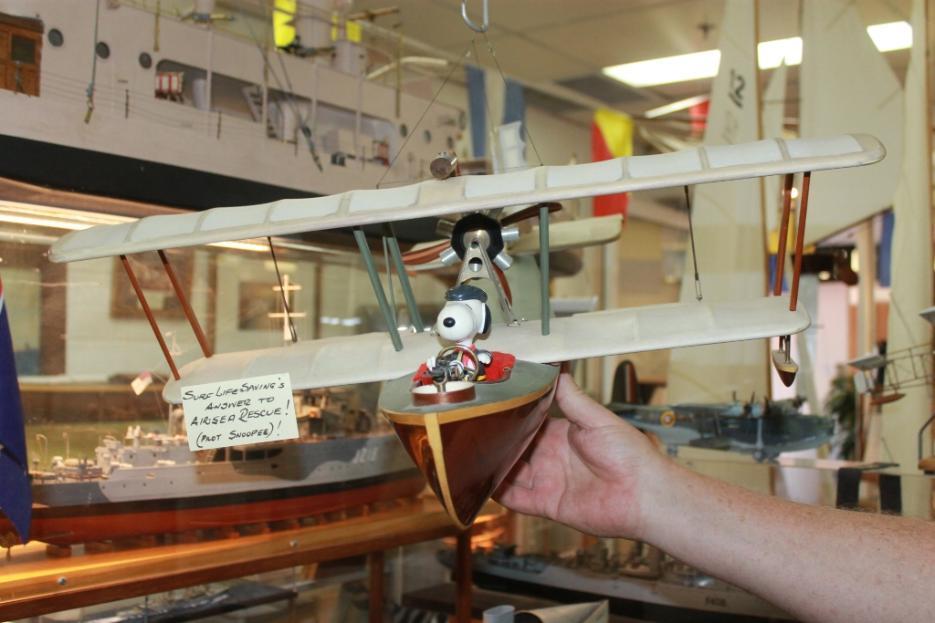November 30 - December 6, 2014: Issue 191
The Maritime Model Museum
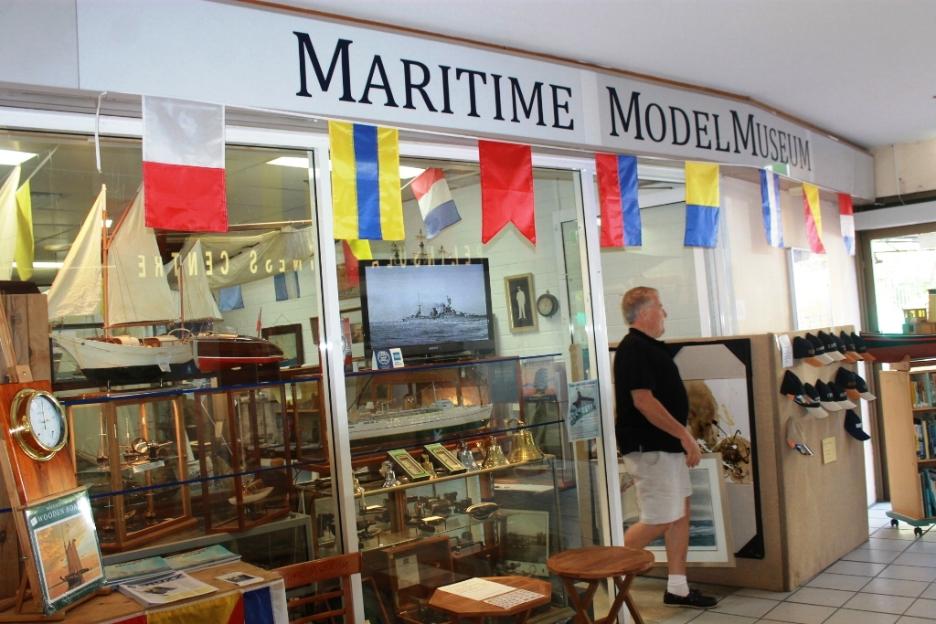
The Maritime Model Museum (At Mona Vale)
The History of Ship Model Making
10a/20 Bungan Street, Mona Vale, N.S.W.
Website: www.maritimemodelmuseum.blogpsot.com
The History of Ship Model Making
10a/20 Bungan Street, Mona Vale, N.S.W.
Website: www.maritimemodelmuseum.blogpsot.com
The Maritime Model Musuem at Mona Vale is a wonderful opportunity to touch history here. Filled with a marvellous collection of Maritime Models, working steam models and associated items – a few samples of this vast collection are ours to dshare with you this week, courtesy of Capt. David McFall – MN Director.
This is also a working museum – they not only restore models, they also build models of peoples yachts on commission – a very special and unique gift for anyone who has a passion for yachts and ships of any kind, or for those who love.
When did the Maritime Model Museum begin?
We officially started in 1990 – I came to Australia in 1989 as Curator of Ship Models at the Sydney Maritime Museum.
When that contract had finished we started the Maritime Model Museum, which is the History of Ship Model Making and depicts many reasons that a model was ever built, dating back to 2000 BC when King Cheops built his first model of the Cheops ship, which was found underground in the pyramids of Egypt together with the full size ship.
We try to depict every reason a model was ever built from Naval Architecture models to toy models, to steam models, models for design work, models for children to play with, votive models that sailors prayed to, models for shipping companies to exhibit – it’s a very wide scope within this subject.
Why were models originally built?
Before the advent of Naval Architects designers tended to carve a model of the proposed ship. Having carved a model they then presented the model to the Admiralty or the ship owner who would then assess and test them by putting them in water. Then they would record the flow of water around the model.
When designing a boat or ship prior to naval architects becoming available, they would make a half hull model and then slice the model up into horizontal and vertical sections and then take line drawings from the sliced sections.
How many models are here in the Mona Vale Maritime Model Museum?
We have on display 120 different models. We also have a number of models in reserve of the same collection. We rotate the models on a six monthly basis.
We also have a models display at the Royal Motor Yacht Club, Newport. I’m also very much involved with the Naval Museum at Garden Island and I am Vice President of the Naval Historical Society of Australia – so I’m very much involved with the History of Ships and the History of Shipping in Australia.
The Navy and the Merchant Navy have always played a very important part in the island of Australia and will inevitably continue to do so.
You restore and refurbish Maritime models too?
Yes; we have a workshop at Manly Vale where we are allowed to use paint sprays, fibre glass and so on. We can’t do that here but we can do restoration work at Mona Vale. At present we’re undertaking the restoration work on the famous Pilot ship Captain Cook III. I do most of this type of work and am the ‘Rigger’ on period ships models.
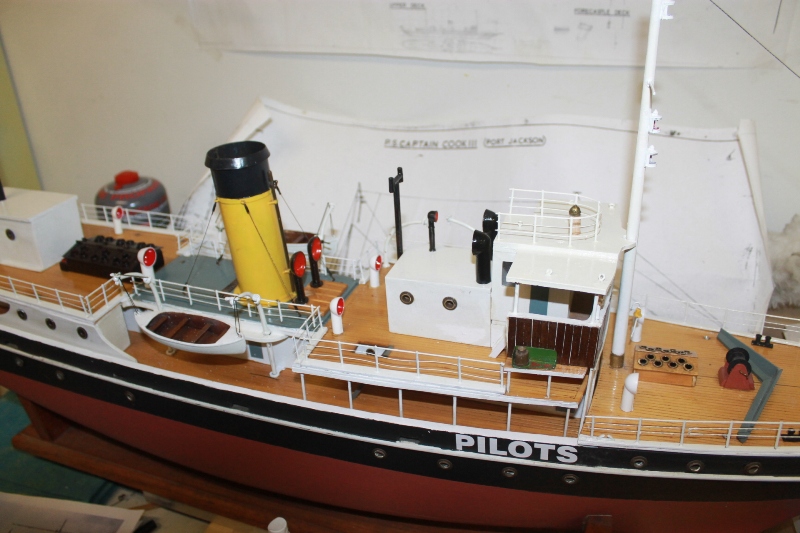
We have a Steam Engineer, Barry Watson who looks after the live steam models. All of our steam engines here, some of which date back almost a hundred years, are all in full working order. We also build stream engines to order or restore those that need work.
Do you have a favourite among those on display here?
I have many favourites, many in the different categories of model. My favourite steam engine, for instance, would be the model that was designed and built by Thornycroft in 1929 for the Royal Navy – that is still in full working order. Thornycroft came out from England to redesign the hydraulics and machinery of the moving bridges and lock gates around Sydney Harbour. While he was here he took up his favourite hobby, which was making steam models - and this is the model speed boat that he built in 1930. He had the steam speed record at the Ashfield Boating Pond Boat Club of 36 miles per hour. That’s his model here – with a photograph of Thornycroft in the background with the model on the Ashfield pond and this photo is of the old club at Ashfield with the yacht pond and the powerboat pond.
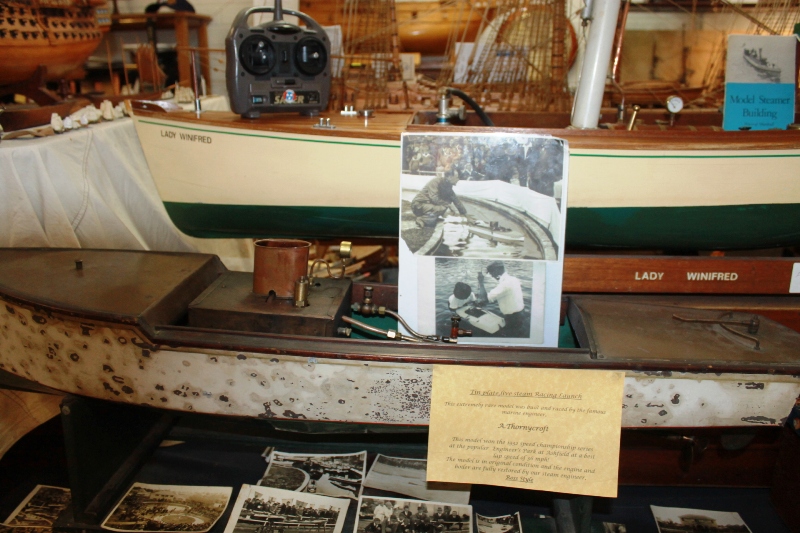
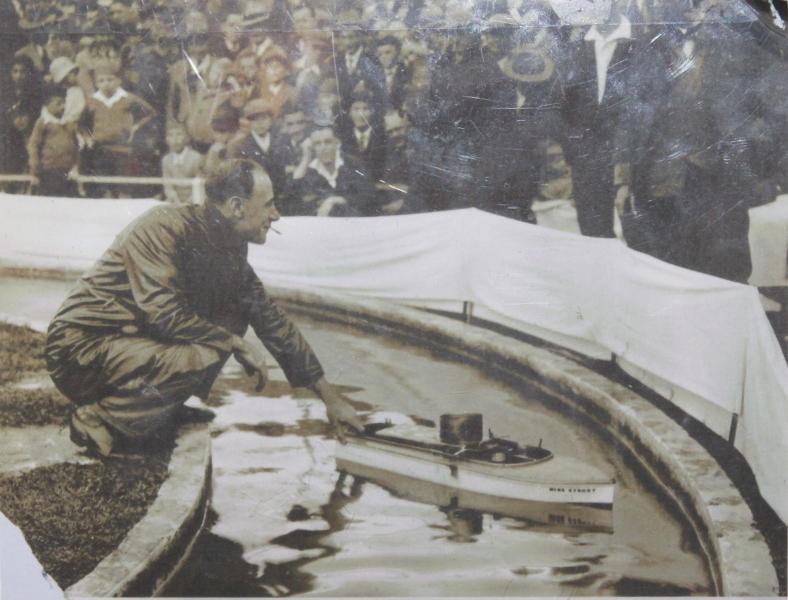
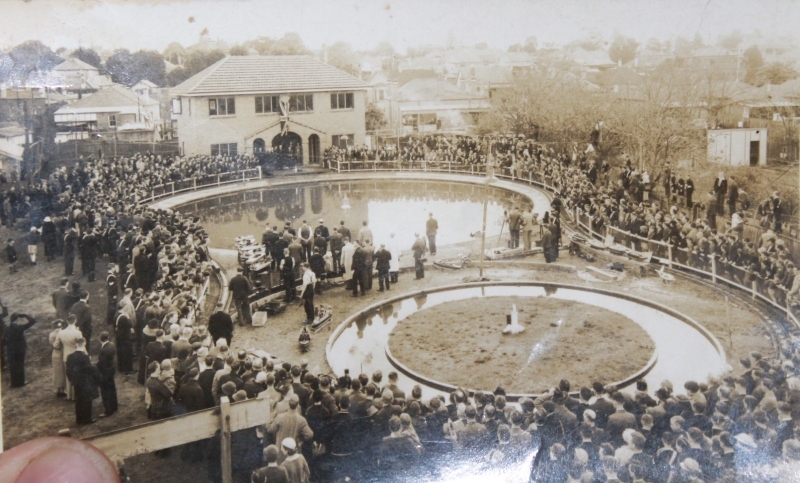
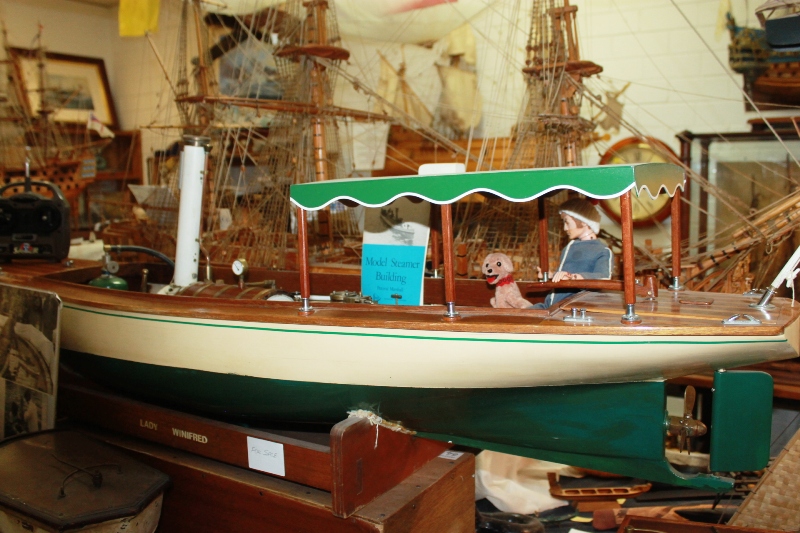
This one is for sale –Lady Winifred- how much does a model of this sort sell for?
Lady Winifred, again, has live working steam and she is fully radio controlled, gas-fired – two of these models were built. This one was given back to us when the owner returned to England. As we have quite a big collection now this one will go on sale and its value is in the region of 25 thousand dollars.
Among the fully rigged models the one which intrigues me the most, from a model point of view and its history, is this model of “Edinburgh”. The model was presented by Shackleton and Mawson to Captain Davis, who rescued them off the ice floe in the Antarctic. To say thank you Shackleton presented the model to Captain Davis. That is Shackleton’s original letter in the frame – and my translation of his scrawl. On the back of that he had already written Rudyard Kipling’s ‘If’ and so again, we translated that into legible text.
From Australia’s point of view this is historically a very important model. It was donated to the Maritime Model Museum by a close friend of the family whom Captain Davis bequeathed it to. The model itself was built in around about 1850 to 1860.
From Australia’s point of view this is historically a very important model. It was donated to the Maritime Model Museum by a close friend of the family whom Captain Davis bequeathed it to. The model itself was built in around about 1850 to 1860.
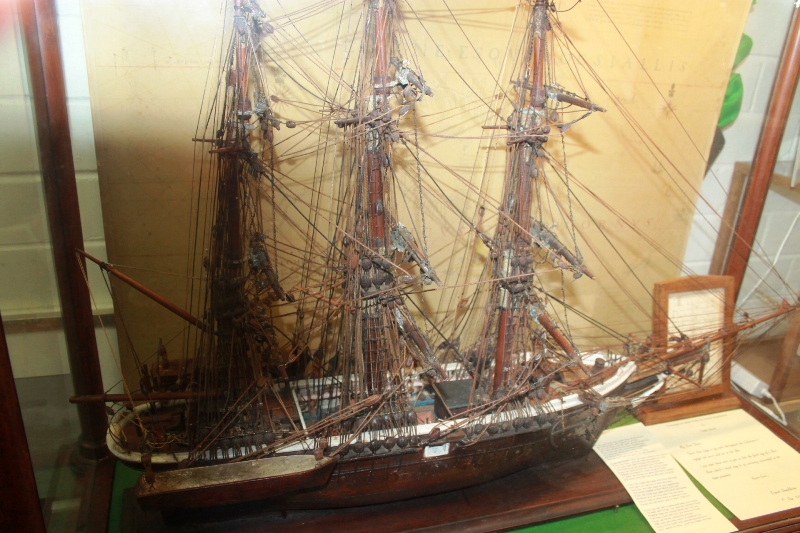
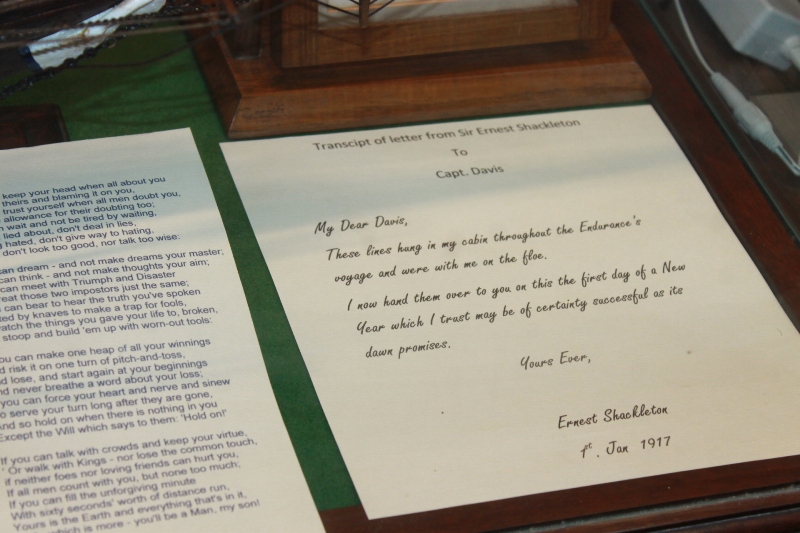
We have undertaken a fair amount of work, restoring the rigging – but it’s very original and probably built by a sailor on board the actual ship. Sailors knew the rigging that they worked on very well- they didn’t know the hull shape quite so well – but this one has even got an accurate hull shape. A historically very important model for Australia. It is my favourite as when you look at it, or touch it, you’re touching the fingerprints of somebody who was building it two hundred years ago. It has a lot of power.
What is the hull made out of?
Difficult to say – normally sailors built the models from timber that was readily available on board the ship. Every shipwright on board a ship had a cabinet full of damage control timber. He would allow sailors who wanted to make models to pick some off cuts for the job . So the likelihood is, being an English ship, that that is made out of something like Baltic Pine.
Baltic Pine was a timber that had plenty of oil in it and lasted through the ravages of sea, salt air and sunshine and worm. The worst thing for ships in those days was toredo worm, a terrible worm that would bore into the ship’s planking. A highly oiled timber such as teak of Baltic pine didn’t suffer so much from these horrible little worms.
What about this one?
That’s HMS Victory –Lord Nelson’s Flag Ship. He beat the Spanish, the French and Dutch fairly regularly but most outstandingly at Trafalgar, which was important for Australia too as it effectively halted the French and the Spanish in their exploits down to the Antipodes. If he hadn’t succeeded in that battle we may all be speaking French now.
How long would a model like that take to build?
This is quite a famous model as it was built by a Blacktown policeman and took him the best part of 15 years to build. He made it all out of radiata pine, which he hand-carved. The plans he got from the National Maritime Museum in Greenwich and was the only major model that he ever built. This was donated to the museum on his death 20 years ago.
And this one?
This is also HMS Victory and is a model that I built in England about 30 years ago. I tried to sell it but no one wants it so I’ve kept it.
Where in England are you from David?
I was born in the north of England but spent most of my time in Cornwall with my uncle who was in the Royal Navy, and the Isle of Wight where I bought a house at the time when I was in the Merchant Navy and Royal Navy Reserve.
I worked for a while at the Maritime Museum in London and so moved up to Kensington, had an apartment there, and then married an Australian lady and came back out to Australia. I had been here a number of times before on short visits – we emigrated in 1989.
This Maritime Model Museum is held in high regard by many collectors and curators, including the Australian National Maritime Museum- how did you begin working with them?
A lot of my work has involved working with the various curators at the Sydney Maritime Museum. I’ve given a number of Talks for the Naval Historical Society, some of which have been at the National Maritime Museum. So in this way, you get to know each other pretty well.
We’re a member of the Museums Association. Every year we have a Maritime Museums Conference where all go, including current Directors of other Maritime Museums around the country. Australia has more Maritime Museums than any other country in the world, mainly because most of us are living on the coast and shipping was and is such an important aspect of trade for Australia.
Now of course we are seeing a big resurgence in shipping, mainly the tourist ships, the cruise lines. Unfortunately the commercial shipping for Australia has pretty well died away – but we’re still ploughing the seas and still the best Navigators in the world down under here.
There are not just models here though – you have some fantastic paintings by Marine Artists, sextants ,octants and chronometers – a wide variety of items – why is that?
Like all museums we have a retail side and so we import a lot of clocks and barometers and nautical instruments from England through Nauticalia at Shepparton. We have also made contact with what we consider to be the best Marine Artists in Australia and elsewhere.
One or two of these I met through the Navy; Ian Hansen was one of these. Joe Barr who donated this collection, was a member of the same club that I am a member of, the Naval Officers Club. He moved from Canberra so he donated all these native models from around the world. Another important part of the History of ship Model Making.
If somebody wanted to commence building Model ships where would you recommend they begin?
If they’re a total novice the first thing you need to realise is how much time and patience you are going to need to build a model and get a good result in the end. We are constantly asked to take over half completed models, where the owner still has the vision of the completed model in mind but has run out of patience. We tend to not accept that sort of commission; it’s a mistake for two model makers to finish one model.
For novices the answer is to get a wooden model kit, which we can advise them on, and which is not going to be too difficult for their skills. If they achieve their first model successfully then they will have learned along the way and go on to a more complicated model in a professional way.
A good example of that is this model here of Soleil Royale – in 1989 Keith Harris, who had never built a model before, came to me at the museum and asked for some instruction of model making, and what to start with.
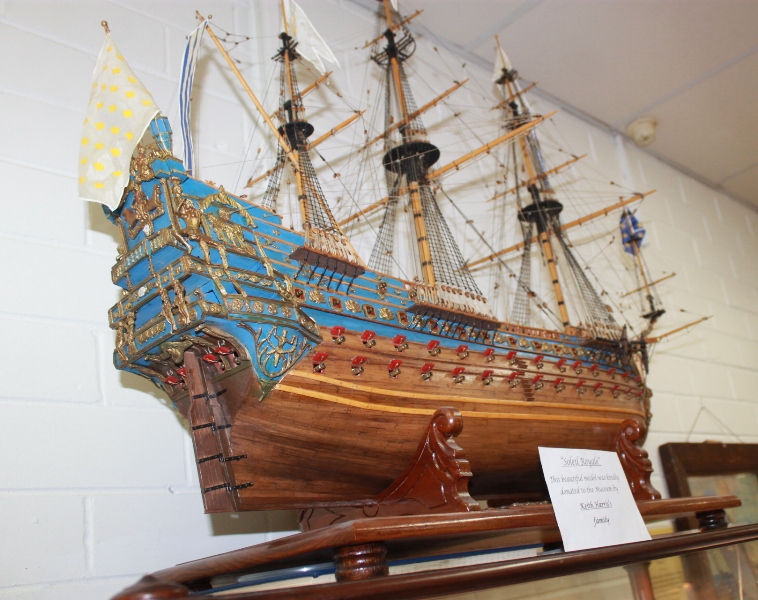
I spent around ten or twelves hours with him and recommended a particular model; the Schooner for Port Jackson, a nice simple little kit and the first Navy ship ever to be built in Sydney. He started on that. I saw him a couple more times when we exchanged thoughts on the work he was doing, but eventually he went his way and I heard nothing more for 10 years until I had a phone call from his widow. He had just died and had left in his will this model of Soleil Royale to the museum as a bit of a thank you. It is certainly a top museum quality model, beautifully made, and we were very touched that he should put us in his will.
Other people start in prison. Here we have a good example of that - this was made by a bank robber, who killed somebody, and he was put into Long Bay. One of the ways the Prison Service have of keeping somebody occupied is to teach them model making. This model was built out of 12 thousand matchsticks over a period of time.
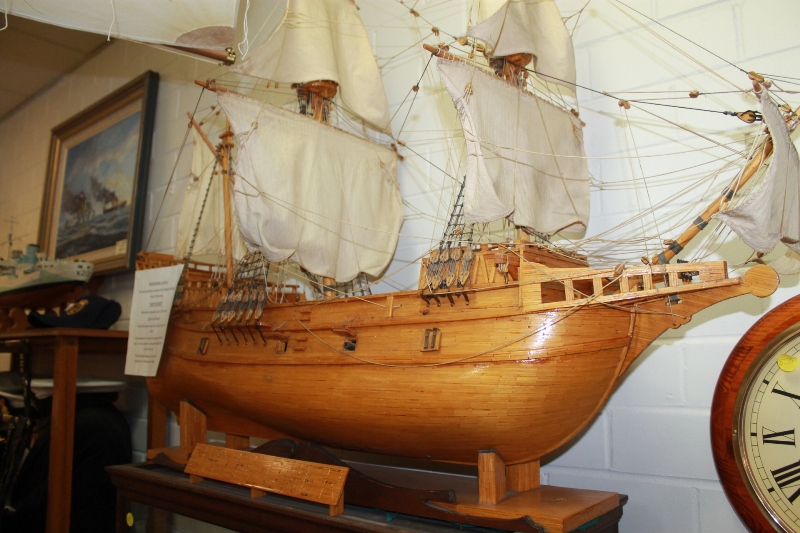
Unfortunately the model maker got out of goal after serving 25 years, couldn’t take it any longer after being outside and committed suicide. His widow then phone us from Goulburn and asked if we’d like to accept this model for the museum. I drove down there and accepted the model straight away. She used to come up once a year on the anniversary of his death, would just walk in, put her hand on the model, and then walk out again. That was her little memorial to him.
This one looks older- or is it just the case?
Yes, that one was built in the 1860’s. it is a very good example of a sailing diorama.
This one looks older- or is it just the case?
Yes, that one was built in the 1860’s. it is a very good example of a sailing diorama.
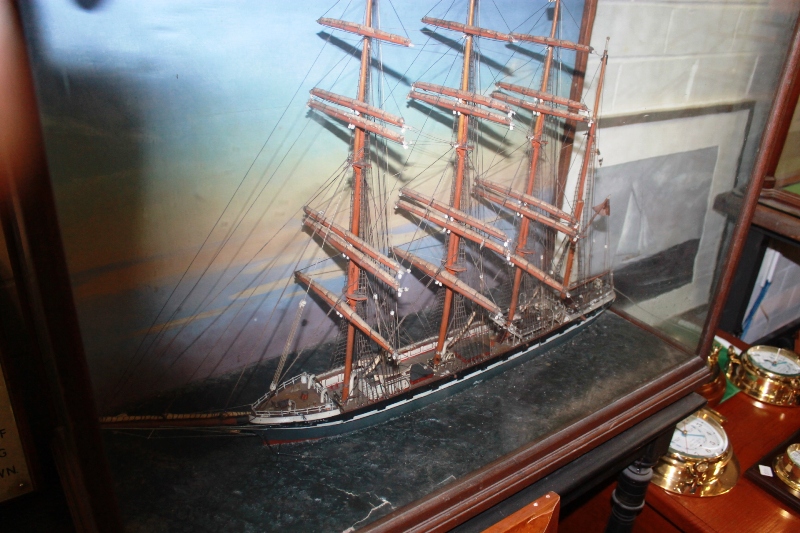
And this one?
This is a Napoleonic French Prisoner of War model – built in an English prison between 1802 to 1805 out of mutton bone. The prisoners would keep the bones from the meat they were thrown, carve them and make these models out of mutton bone. Some of them were sold to the local gentry, which meant that a lot of French prisoners, at the end of the war went back to France pretty well off because they had sold these models. They are very valuable, very rare, especially rare in Australia- there’s only 2 or 3 in Australian museums.
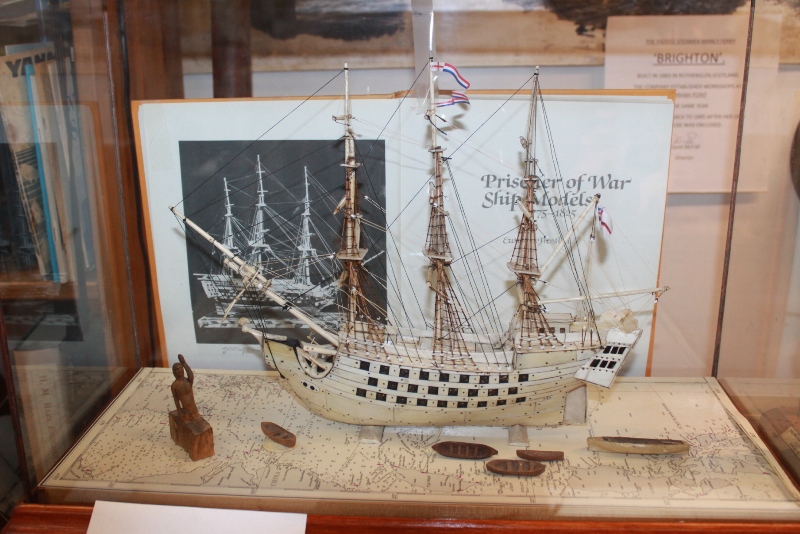
This took the best part of 250 to 300 hours of restoration – it required total re-rigging, replacing any missing bone parts and so we carved down the bones that you buy in pet shops for dogs to chew on. All the rigging blocks; we managed to find tiny little glass beads for the rigging, which was how they did it originally and so this is a very precious model.
This too is a fantastically interesting item – The America’s cup –Sir Thomas Lipton made six of those when he challenged for the America’s Cup; three stayed in America and three stayed in England and I managed to find one of the English ones and brought it out to Australia. We have placed it here next to one of the models we built for the Bond Syndicate as give-aways in 1983. You have the hallmarks on the side of the cup to authenticate the date and the model itself.
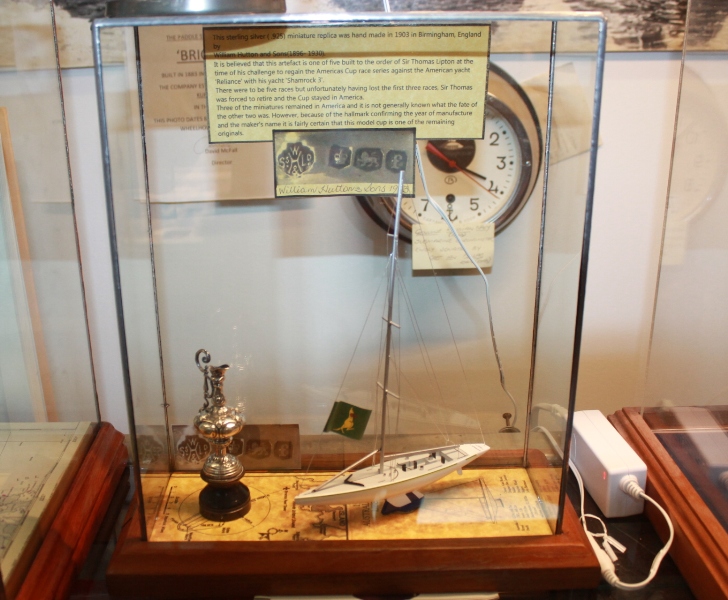
Last but certainly not least – when I was in the Merchant Service in England I visited a lady in the Cowes Isle of Wight who had this picture on her wall. She had never left the Island, was in her ‘90’s. she explained to me that her grandfather had been Captain of Queen Victoria’s racing cutter, Victoria, and her grandmother was a lady-in-waiting to Queen Victoria at Osborne House when she came down to the Isle of Wight.
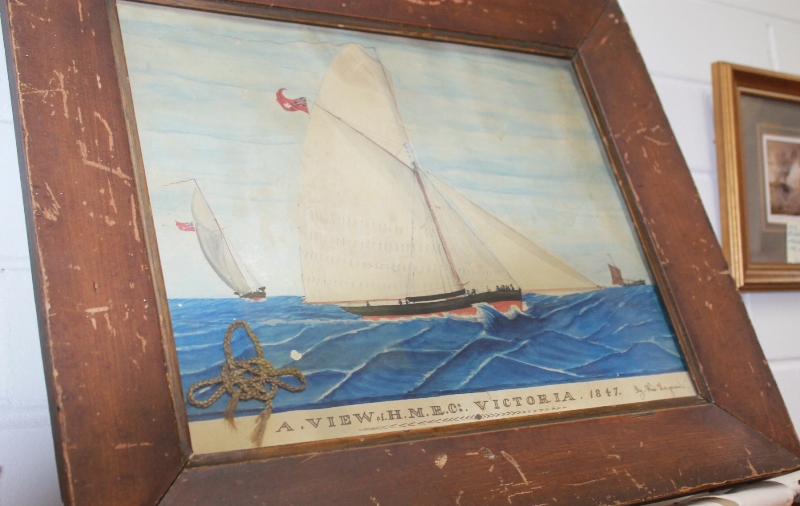
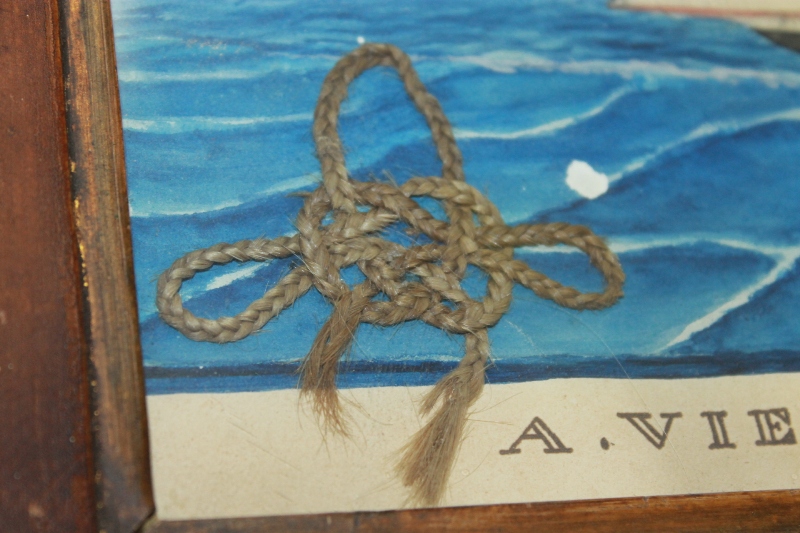
One of her tasks was to cut Queen Victoria’s hair; she gave some of Queen Victoria’s hair to her brother, who then made an Ocean Plait from the Queen’s hair and put this into the painting he had just finished of her racing cutter, which competed on the Isle of Wight during Cowes Week. That is the original frame, the original painting, showing the cutter flying all the correct flags, all the way from the Isle of Wight.
What hours is the Maritime Model Museum open?
We’re open five and a half days a week – Monday to Friday from 9.00 a.m. until 3.30 and on Saturdays from 9.00 am through to 12.30 in the afternoon.
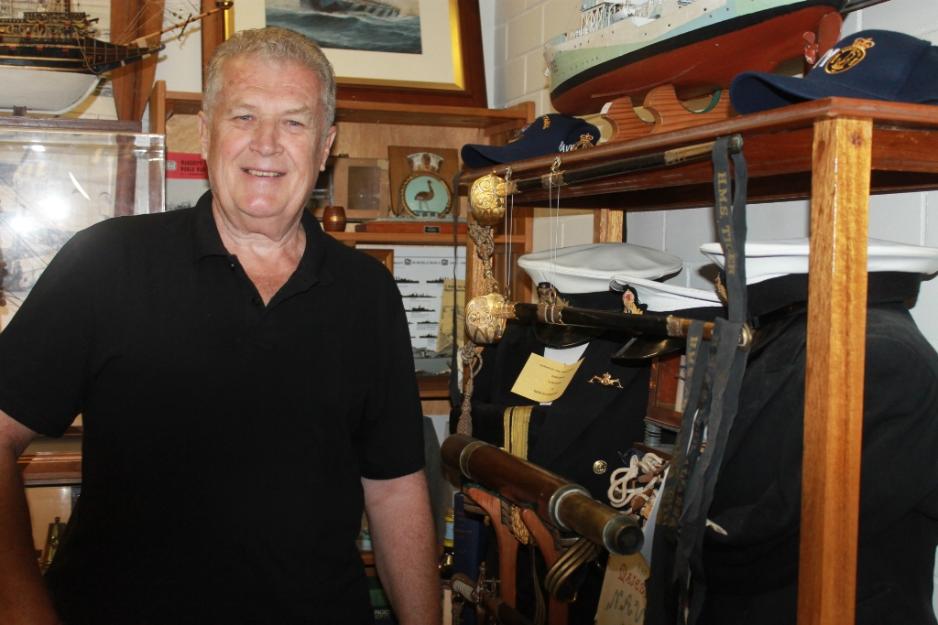
Capt. David McFall.
